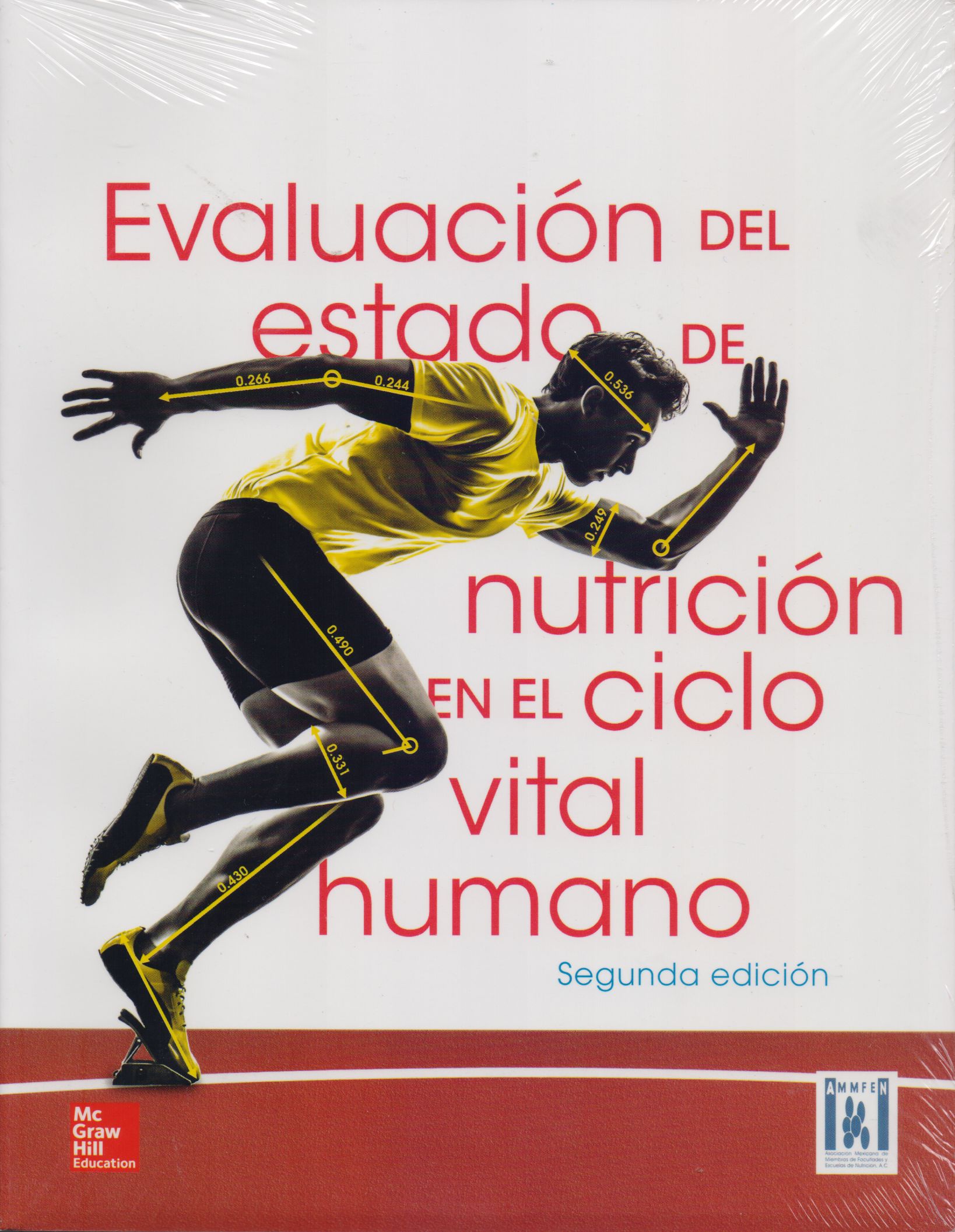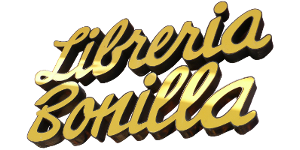Libros relacionados
 |
Evaluación del Estado de Nutrición en el Ciclo Vital Humano Anzola Rojas, Sérvulo Mc Graw Hill Educacion |
 |
Wardlaw: Perspectiva en Nutrición Byrd-Bredbenner, Carol / Moe, Gaile / Beshgetoor, Donna / Be Mc Graw Hill Educacion |
 |
Hábitos Alimentarios. Psicobiología y Socioantropología de la Alimentación López-Espinoza, Antonio / Magaña González, Claudia Rocío Mc Graw Hill Educacion |
 |
Nutrición y Dieta en la Prevención de Enfermedades Erdman, John / Macdonald, Ian / Zeisel, Steven Mc Graw Hill Educacion |
 |
Nutrición Molecular Gordillo Bastidas, Daniela / Gordillo Bastidas, Elizabeth Mc Graw Hill Educacion |


|
Título: Understanding And Controlling The Microstructure Of Complex Foods | |
| Autor: Mcclements, D. Julian | Precio: $4658.00 | |
| Editorial: Crc Press | Año: 2007 | |
| Tema: Nutricion | Edición: 1ª | |
| Sinopsis | ISBN: 9781420065732 | |
| With its distinguished editor and array of international contributors, this book provides a review of current understanding of significant aspects of food structure and methods for its control. It begins with coverage of the fundamental structural elements present in foods and the forces which hold them together, discusses novel analytical techniques which can provide information on the morphology and behaviour of food materials, then examines how the principles of structural design can be employed to improve performance and functionality of foods. The book concludes with a discussion of how this knowledge can be implemented to improve properties of foods.
MICROSTRUCTURAL ELEMENTS AND THEIR INTERACTIONS Polysaccharides: Their Role in Food Microstructure, V.J. Morris Introduction Food Polysaccharides Functional Polysaccharides in Food Microstructural Origins of Functional Properties Polysaccharide Interactions with Other Food Components Manipulating Polysaccharide Structure and Function in Foods Future Trends References and Further Information Proteins in Food Microstructure Formation, H.H.J. de Jongh Introduction Proteins and Their Functional Groups Protein Aggregation and Network Formation Interface Stabilization by Proteins Application of Protein Functionality References Structure and Function of Fat Crystals and Their Role in Microstructure Formation in Complex Foods, D. Tang and A.G. Marangoni Introduction Physical Properties of Fat Crystal Networks Physical Models of the Microstructure of Fat Crystal Networks Microstructure of Fat Crystal Networks Fractal Dimensions Used to Quantify Microstructure of Fat Crystal Networks Fractal Dimension and Crystallization Kinetics Future Trends Sources of Further Information and Advice References Effects of Water Distribution and Transport on Food Microstructure, E. Vittadini and Y. Vodovotz Introduction Measuring Water Distribution and Transport in Complex Systems and Its Effect on Food Microstructure Controlling Water Distribution and Transport to Improve the Quality of Complex Foods Future Trends Sources of Further Information and Advice References Structure and Function of Emulsifiers and Their Role in Microstructure Formation in Complex Foods, N.M. Barfod and F.V. Sparso Introduction: Emulsifiers in Complex Foods Structure, Properties and Interactions of Three Important Food Emulsifiers The Role of Emulsifiers in Microstructure Formation in Complex Foods Controlling Surfactant Behaviour to Improve Microstructure in Complex Foods Future Trends References Colloidal Systems in Foods Containing Droplets and Bubbles, E. Dickinson Introduction Colloidal Particles in Complex Foods Stabilization of Oil-Water and Air-Water Interfaces Interactions of Particles, Droplets and Bubbles in Food Colloids Structure Formation by Particles, Droplets and Bubbles Using Microscopy to Probe Stability and Instability Mechanisms Using Microscopy to Monitor Aggregation and Gelation Processes Future Trends References Ingredient Interactions in Complex Foods: Aggregation and Phase Separation, V.B. Tolstoguzov Introduction Macromolecular Ingredient Interactions Incompatibility of Biopolymers Conclusions Future Trends and Sources of Further Information References NOVEL METHODS TO STUDY FOOD MICROSTRUCTURE Atomic Force Microscopy (AFM) Techniques for Characterizing Food Structure, V.J. Morris Introduction AFM and Other Microscopic Methods Applications of AFM in Food Science Applications in Food Technology Future Trends Further Information References Confocal Fluorescence Microscopy (CLSM) for Food Structure Characterisation, N. Lorén, M. Langton and A.-M. Hermansson Introduction Principles of Modern CLSM CLSM and the Study of Food Structure Application of CLSM to Food Systems Measuring and Modelling Using CLSM Images Conclusions and Future Trends References Advances in Image Analysis for the Study of Food Microstructure, J.M. Aguilera and J.C. Germain Introduction: Obtaining Quantitative Microstructural Information About Food from Image Analysis Particular Difficulties in Image Analysis Advances in Image Processing and Measurement Tools Advances in Image Analysis Techniques Future Trends Sources of Further Information and Advice References Food Characterisation Using Scattering Methods, T Nicolai Introduction Techniques and Instruments Advantages and Disadvantages of Scattering Methods Over Other Methods Using Scattering Methods to Study Particular Structures and Processes Future Trends Sources of Further Information and Advice References Acoustic Techniques to Characterize Food Microstructure, M Povey Introduction: Using Acoustic Techniques to Study Food Microstructure Techniques and Instruments Used Using Ultrasonic Techniques to Study Particular Structures and Processes Advantages and Disadvantages of Acoustic Techniques Over Other Methods Future Trends Sources of Further Information and Advice References Modelling and Computer Simulation of Food Structures, S.R. Euston, G. Costello, M.A. Naser, and M.L. Nicolosai Introduction Computer Simulation Techniques Using Modelling and Computer Simulation to Study Bio-Molecules in Foods Using Modelling and Computer Simulation to Study Colloidal Phenomena in Foods Future Trends Sources of Further Information and Advice References MICROSTRUCTURAL-BASED APPROACHES TO DESIGN OF FUNCTIONALITY IN FOODS Creation of Novel Microstructures Through Processing: Structure Formation in (Semi-) Solid Food Materials, A.J. van der Goot and J. Manski Introduction The Effect of Processing on Structure and Molecular Properties Effect of Deformation on Food Structure Balancing Deformation and Solidification Improving Structure Formation in (Semi-) Solid Foods Future Trends References Influence of Food Microstructure on Food Rheology, M.A. Rao Introduction The Microstructure and Rheology of Foods Common Rheological Methods: Small-Amplitude Oscillatory, Shear Flow and Large-Deformation Tests Theoretical Rheological Models and Their Application Structural Models and Analysis of Rheology Future Trends Sources of Further Information and Advice References Influence of Food Microstructure on Flavour Interactions, S. Ghosh and J.N. Coupland Introduction Thermodynamics of Flavour Interactions Kinetics of Flavour Release Experimental Systems to Validate Models Conclusions References Relating Food Microstructure to Sensory Quality, G.A. van Aken Introduction: Importance of Studying the Relationship Between Food Microstructures and Sensory Properties Methods to Study the Intra-Oral Behaviour of Emulsions and Other Complex Foods Understanding the Intra-Oral Behaviour of Foods Future Trends References Physicochemical and structural aspects of lipid digestion, D.J. McClements, E.A. Decker, and Y. Park Introduction Lipids in the Human Diet Physicochemical and Structural Aspects of Lipid Ingestion, Digestion and Absorption Experimental Studies of Lipid Digestion and Absorption Future Trends Further Information References Nanoscale Liquid Self-Assembled Dispersions in Foods and the Delivery of Functional Ingredients, N. Garti and A. Aserin Introduction Association Nanocolloids Micellar Systems and Microemulsions Lyotropic Liquid Crystals (Lamellar, Hexagonal, Cubic Phase) and Corresponding Dispersions (Cubosomes, Hexosomes, Micellosomes) Conclusions References MICROSTRUCTURAL APPROACHES TO IMPROVING FOOD PRODUCT QUALITY Structure-Engineering of Ice-Cream and Foam-Based Foods, H.D. Goff and C. Vega Introduction Description and Formation of Microstructure Methods to Study the Microstructure of Whipped Cream, Ice-Cream and Other Foam-Based Foods Future Trends Sources of Further Information and Advice References The Texture and Microstructure of Spreads, A. Bot, E. Flöter, J.G. Lammers, and E.G. Pelan Introduction Emulsion Microstructure: Ingredients Emulsion Microstructure: Processing Spread Stability During Transport and Storage Analysing Spread Texture Future Trends References Microstructural Approaches to the Study and Improvement of Cheese and Yogurt Products, J.A. Lucey Introduction Casein micelles: The Building Blocs of Yogurt and Cheese Structure Development in Cheese Structure Development in Yogurt Methods to Study the Microstructure of Yogurt and Cheese Future Trends Sources of Further Information and Advice Acknowledgment References Microstructural Aspects of Protein-Based Drinks, M. Mellema and A. Introduction Dairy Drinks: An Introduction Effects of Processing Effects of Stabilising Hydrocolloids Improving the Nutritional Quality of Dairy Drinks References The Microstructure of Chocolate, D. Rousseau Introduction The Composition of Chocolate Fat Structure-Function Relationship Chocolate Making Process Fat Bloom Methods to Study the Microstructure of Chocolate The Microstructure of Chocolate Effects of Processing on Microstructure Summary and Future Trends Sources of Further Information and Advice Acknowledgements References Bubble Formation and Stabilisation in Bread Dough, E.N.C. Mills, L.J. Salt, and P.J. Wilde Introduction Bread Foam Formation Bread Foam Stabilisation Liquid Film Composition and Properties in Bread Foam Stabilisation Emulsifiers Lipase Conversion From Foam to Sponge Conclusion References Food Microstructure and Shelf-Life of Emulsion and Gel-Based Products, G. Barker and R. Penfold Introduction Complex Food Materials Stability and Control Review of Measurement Techniques Summary References Appendix: Magnetic Resonance Methods for the Study of Food Microstructure, P.S. Belton Introduction The Basic Concepts The Interaction of Distance and Time Scales Examining Microstructure by Relaxation Times and Line Shapes Microstructure from Diffusion Measurements Microstructure from NMR Imaging Future Trends Sources of Further Information and Advice References |
||
Librería Bonilla SA de CV © Todos los derechos reservados. 2019
Última actualización: Jul 2019




